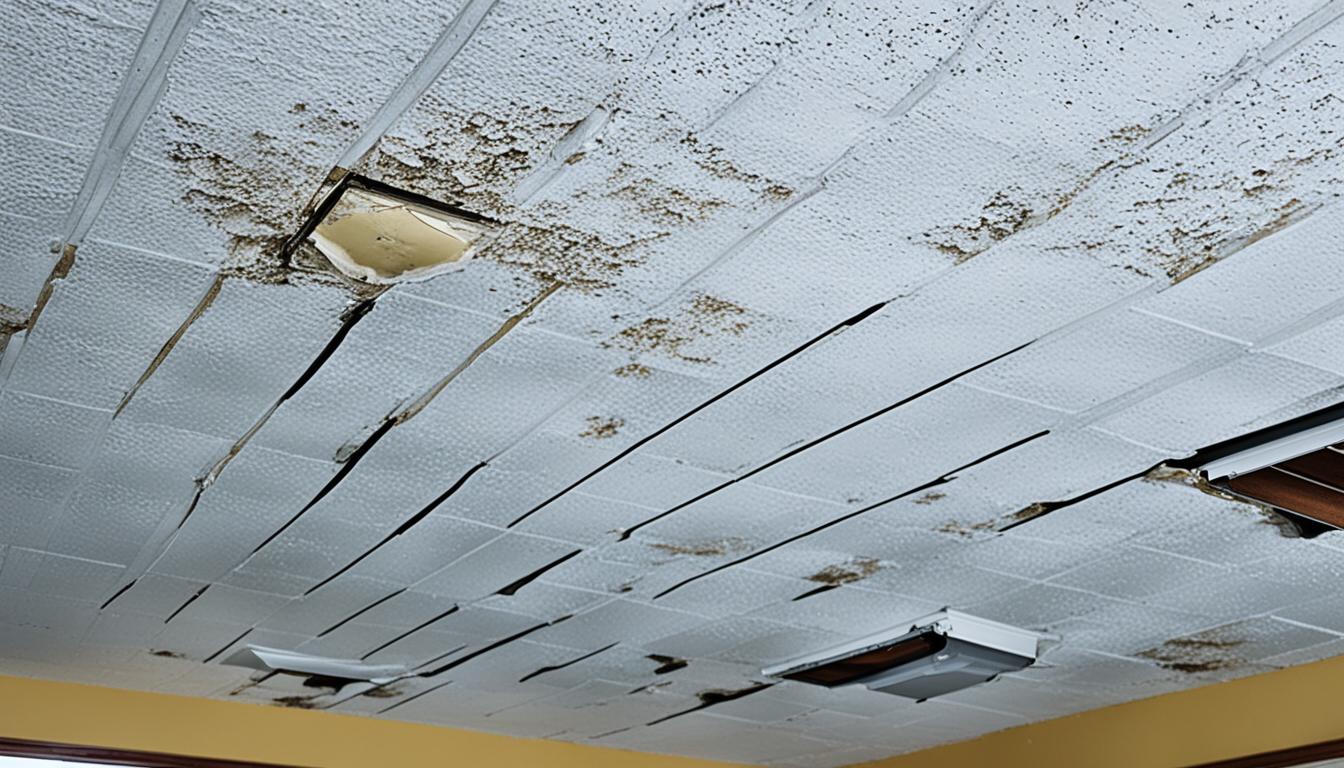Did you know that just one inch of water can harm drywall? Many homeowners don’t realize how vulnerable their walls are to water. Knowing how much water can damage drywall is key because even a little moisture can cause big problems.
Moisture damage from leaks, burst pipes, or floods is a big worry. It needs quick action. If drywall stays wet for too long, it can weaken and even grow mold. Fixing it fast is important to avoid expensive repairs and health risks.
Key Takeaways
- Even one inch of water can cause significant damage to drywall.
- Water intrusion leads to structural compromise and mold growth.
- Timely drywall repair water damage is essential to avoid costly repairs.
- Understanding water damage drywall can help prevent health hazards.
- Prolonged exposure to humidity can also damage drywall, not just significant leaks.
Understanding Drywall and Water Damage
Drywall, also known as plasterboard, is a common construction material. It’s affordable, easy to install, and has a smooth finish. The composition of drywall includes gypsum, sand, and paper or fiberglass. This mix makes drywall very sensitive to water damage.
Gypsum is very porous, which means it easily takes in water. This can cause big problems if not handled right. When water gets into the composition of drywall, it breaks down the gypsum. The paper or fiberglass also starts to break down, losing strength and beauty.
Water damage weakens drywall, making it more likely to fail. It also can cause mold and mildew, which are harmful to health. So, knowing how drywall reacts to water is key to preventing damage and fixing it quickly.
To better understand, let’s look at a comparison of the materials involved:
| Material | Role in Drywall | Impact of Water |
|---|---|---|
| Gypsum Core | Main structural component | Absorbs water, dissolves, weakens structure |
| Paper or Fiberglass Facing | Protects and stabilizes, offers a smooth finish | Absorbs water, deteriorates, loses integrity |
How much water does it take to damage drywall?
Water can harm drywall in different ways, depending on how much and for how long it stays. Knowing these levels is important for fixing water damage on drywall.
| Amount of Water | Effects on Drywall |
|---|---|
| Minor Damage: Less than 1 Inch of Water | Light staining and slight warping are common. Moisture might not go deep, keeping damage mostly on the surface. Quick drying can prevent more problems. |
| Moderate Damage: 1 to 2 Inches of Water | This can harm electrical systems and insulation inside walls. Moisture damage to drywall gets worse, needing more detailed repair plans. |
| Significant Damage: Over 2 Inches of Water | Severe damage includes serious structural and electrical issues. This level needs thorough restoration to ensure safety and stability. |
Knowing these categories helps make better choices for fixing water-damaged drywall. Acting fast is key to controlling damage and ensuring a good fix.
Conclusion
Quick action is key when dealing with drywall water damage. It keeps your living space healthy and looking good. Knowing how much water can harm drywall helps you take the right steps to fix it.
Preventing drywall water damage starts with regular checks and upkeep. Catching small leaks early can save you from big problems and expensive fixes. Using materials that resist water in wet areas also helps protect your drywall.
In short, acting fast and knowing about drywall damage is vital. The right steps and fixes keep your drywall safe and sound. By staying alert and taking action, you can keep your home looking great and your investment safe.









